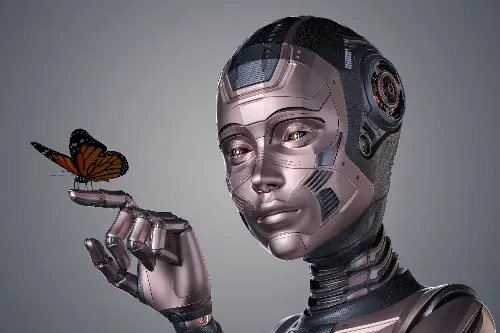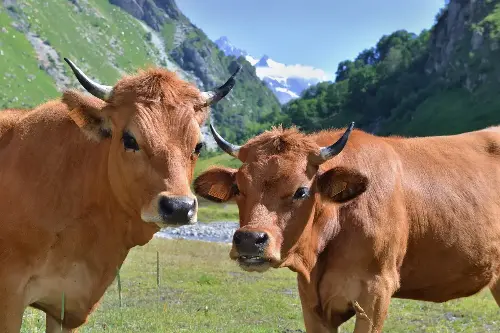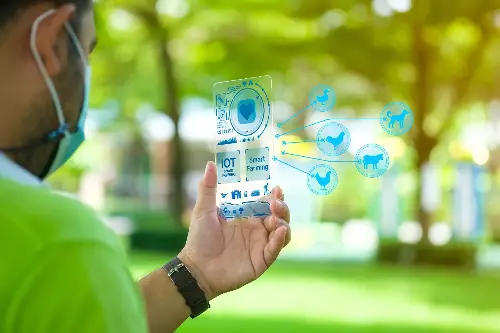For centuries, human understanding of animal communication and emotions has been bound by our own sensory and cognitive limitations. We’ve long recognised that animals communicate, but the depth and complexity behind these interactions remained largely a mystery. Today, however, a radical shift is occurring, fuelled by the rise of artificial intelligence (AI). Researchers are now employing sophisticated AI algorithms to decipher the subtle nuances in animal sounds and behaviours, propelling us into a new era where we are beginning to truly interpret the language of the animal kingdom.

Decoding the Unspoken Language
Imagine a world where you could listen to a symphony of birdcalls and understand each as clearly as a sentence in your native tongue. While this may sound like science fiction, advanced machine learning models are turning it into a reality. The field of bioacoustics has been particularly revolutionised by AI, which can analyse vast libraries of animal sounds and distinguish between different calls, pitches, and durations, unlocking patterns imperceptible to the human ear.
For instance, researchers at the University of Konstanz in Germany developed an AI system that accurately differentiates between the activity calls of bats. It's a massive stride, considering that bats emit ultrasonic frequencies during echolocation and communication—frequencies that are beyond human hearing. Such work does not just add to our academic knowledge; it offers invaluable insights into conservation efforts by monitoring species' presence and behavioural responses to environmental changes.
Interpreting Emotional States
But the breakthroughs don’t stop at communication; AI is also transforming our insights into animal emotions. By utilising AI-powered image and video analysis, scientists can interpret minute changes in body language, facial expressions, and physiological responses. These subtle cues, once imperceptible to us, can signal a range of emotions from stress and fear to pleasure and contentment.
Research at institutions like the University of Cambridge is paving the way. Emblematic of this is the 'HappyCow' project, which uses AI to monitor cows' faces, interpreting nonverbal signs to assess their well-being. Such technologies allow for more humane approaches to livestock management and reflect a tide change in our ethical responsibilities towards animals.

Understanding Social Dynamics
Beyond individual emotions, AI provides unparalleled insight into the complexities of animal social systems. By employing algorithms that can recognise and track individual animals, researchers unearth intricate social networks within groups, unpacking hierarchies and relationships that were once the domain of speculation.
Dolphins, for example, have complex social structures, and their communications are indicative of this complexity. AI-driven tools have helped decode signature whistles akin to names and pinpoint subtle shifts that indicate changes in social status or affiliations. These findings deepen our appreciation of the social cognition that underpins animal communities, echoing the nuanced social dynamics of human societies.
A Tool for Conservation
Let's not forget the instrumental role AI is playing in the ongoing battle for wildlife conservation. Illegal poaching and habitat destruction continue to threaten numerous species, but AI-driven surveillance systems now bolster the efforts to fight back. AI can identify gunshots, detect human encroachment, and monitor populations, automating conservation tasks that were once laborious and imprecise.
Through predictive analytics, it's not just about monitoring; it's about proactive protection. AI's predictive power helps conservationists anticipate threats by analysing patterns in data, from wildlife migration to illegal human activities, helping strategise interventions before a crisis hits.
Challenges and Ethical Considerations
While AI's potential in animal studies is inspiring, it is not without its challenges. The technology requires vast amounts of data, necessitating stringent privacy and ethical standards. Issues of anthropomorphism, where we ascribe human attributes to animals, also persist, potentially skewing how we interpret data.
Moreover, there's a risk of technology-driven detachment; firsthand observations and animal welfare must remain at the forefront, supported by, not replaced by, technological tools. Researchers must tread carefully, ensuring our thirst for knowledge does not override the respect and care these creatures deserve.

The Future of Human-Animal Communication
As we look forward, it's clear that AI is not just changing the landscape—it's reshaping the horizon of what’s possible in understanding animal communication and emotions. With each whispered whistle and silent gesture, we're uncovering a new chapter in the natural world, one that speaks to the shared sentience of all living beings.
This burgeoning relationship between AI and animal studies is a testament to human ingenuity. It demonstrates a collective desire to bridge the gap between our species and others with whom we share the Earth. As our technological prowess grows and our ethical frameworks mature, this revolutionary leap in AI promises a future where mutual understanding fosters a more harmonious existence with the remarkable creatures that roam this planet alongside us.
